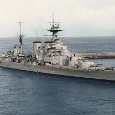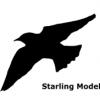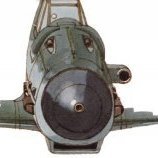Sorry for the delay, I wanted to get far enough into the sweep winch to tell it's story. This is still part 1 of the winch, more detail will follow next week.
However, before we dive down that rabbit hole, a few bits of finishing on the foc's'le
The foc's'le has no fewer than 15 vents of 4 different types plus a chimney from the forward crew flat stove
Here is a shot of the starboard side with all those vents fitted. There seem to be at least two types of mushroom vent used on flowers, round capped and square capped. This is in addition to the FMV's which I believe stand for "French" Mushroom vent with a grill on the side of the square cap. The vents on the main deck seem to all be labelled FMV, I made them a few months ago. However, the foc's'le vents would appear to be normal MV's.. The GA has these drawn as square capped so that's what I've made for the 6 and 8 inch vents, the 4 inch short vents on the deck edge look like round capped vents and they are very short. They are also painted black for some reason, they stand out on the pictures
Anyway, that's more than anyone really needs to know about vents. Note also the freestanding voice pipe behind the windlass and the short stanchions round the 4 inch platform, part wire, part rod, will be fitted later when I've made up the access ladders, the platform is still removable.
I also bit the bullet and filled the vertical T sections on the bridge wing framing down to 2.5mm from 3 mm wide. I think it looks much lighter as a result, but it's hard to appreciate from the photograph
OK, now onto the winch.
As I've said before, the Clarke Chapman winch the JL has drawn on the Taplet Publications, reproduced in the warship perspectives book just doesn't fit Alisma. The steam engine is in the way. Weirdly, he has reproduced it on the plan, but missing it's motive force (no engine). Also, the side elevation of that winch does not match the drawings I have of Alisma from the yard. I'm not sure why, it's a real puzzle. In his book on trawlers and drifter, he has an outline sketch of Robertsons Minesweeping winch which is powered by side mounted cylinders in the manner of the windlass. This one close fit, but (and there is always a but) its side elevation also doesn't match the shipyard drawings I have of Alisma. Also, Alisma's drawings call the winch out as made by Clarke Chapman
The Roberson winch in the trawler book only has two shafts, a drive shaft and the main drum shaft, Alsima's GA clearly shows three shafts, see below, sorry its a bit small.
Now, I honestly remain puzzled as to the purpose of the third shaft. Even more confusing, I found this picture of a clarke chapman twin drum cargo winch with side cylinders but only two shafts
This picture shows a sweep winch of the side cylinder type with two capstans per side, a large forward capstan and a smaller rearward one giving purpose to a third shaft. Apart from the plan view on Alisma only showing one capstan per side the rest of the detail on this picture matches
This picture of a Roberson winch seems to be the model LJ drew in his book on trawlers, just for completeness
Now, a sweep winch is really just a special version of a twin drum cargo winch and much searching unearthed this drawing of a cargo winch which in elevation scales identically to the GA drawing with a modification on the side frames, but the wheels/shafts are spot on. The lower drive shaft has the ability to engage with the main drum drive gear, or the upper shaft gear via that handle on the left just to the right of the lower steam cylinder but engaging it would not appear to do anything as that upper shaft has no purpose
I remain very confused and really I stopped making progress because I couldn't understand what that shaft was for and being an ex-engineer, that has really bothered me and taken up far to much of the time I have left on this earth
So, leaving this puzzle aside, I decided to make the thing anyway, doing what I knew. I did draw it all in both 2 and 3d and printed a version with the upper shaft carrying small capstans, but really I don't believe that is right now. Picture below just showing the parts loosely fitted up and it's missing a lot of other stuff.
One thing that did solve however, was this cryptic note on the rigging plan - "Portable Wood Grating"
.
When I offered up the printed model to the ship, it was clear that the brake wheels could not be reached by the operator and the grating has to be at the level of the top of the central ammo hatch. Luckily, I had installed the rear deckhouse doors with a very high threshold and so I had space to make up platforms either side with grating top and a step that still fit under the opened doors.
This is the first thing on the whole winch story that I like, they will be toned down of course, actually probably painted and the wood showing through due to wear. BTW, that raised hatch to the rear of the winch position also clash with the port steam cylinder, more adjustment needed.
Now, clearly I can't have such a large lump of plastic on the model, the sweep winch must be metal, so I've commenced making the parts I'm confident of
The base-plate
The brake drums, see also the pattern for the side frames ready to cast
Mould first pour complete. The long pour tubes help press air out
And a shot of my highly non-professional (frankly dangerous) arrangement for low temperature allow casting, talc is used as a release agent. The clamps allow the mould to be tapped to remove the air while the metal is still molten
Taking shape, three cast and cleaned up. The original would have cast side frames, so I'm happy with this approach
and with the drums made up and added, trying an angle for the level wind mechanism which will be scratch made in brass. The framing on the ends of the brake drums was filed in brass, would have been neater as an etched part, but I'm not waiting, they are a trifle rustic
And lastly, the first of the two steam cylinders being test fit
So, if I can't find a solution to the mysterious third shaft, I shall just build what matches the drawings and try not to worry about its lack of purpose, though I admit this may require therapy...
Cheers
Steve












.thumb.jpg.8e014d2f7c29f4fc3c8f480a617bc78b.jpg)


.thumb.jpg.b4a5069fd2c2dd5708ce1694345c5b11.jpg)
